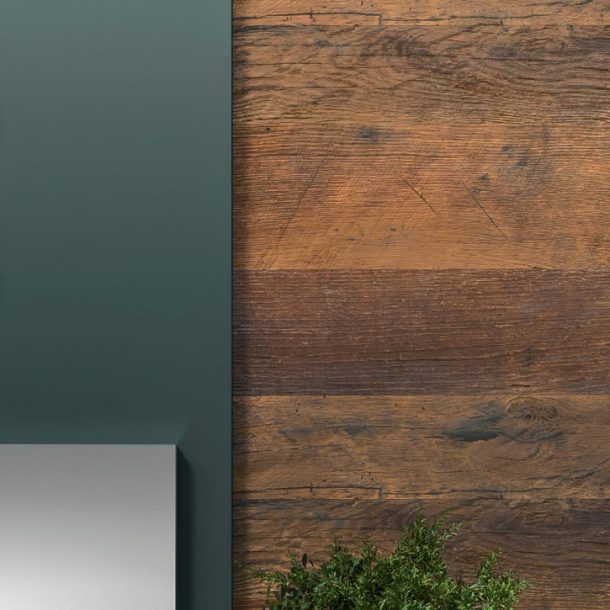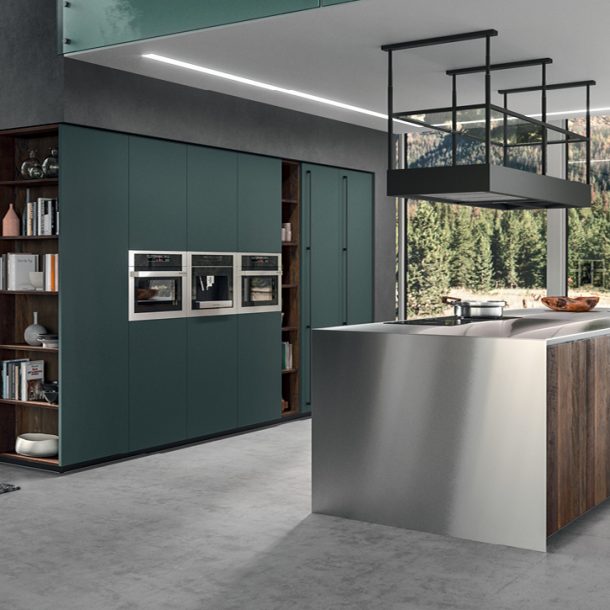
KITCHEN BACK PANELS: MUCH MORE THAN A SPLASHBACK
WHAT IS THE PURPOSE OF A BACK PANEL?
Principally, back panels are used to protect the wall behind a cooker from stains and splashes. However, they have become increasingly important in terms of aesthetics. With a vast choice of materials, finishes and colour schemes, back panels now go way beyond their original function of a simple splashback.
It is important to choose a back panel not just according to the kitchen layout and colour scheme, but also bearing in mind other criteria, including ease of application, cleaning and maintenance, and heat resistance.
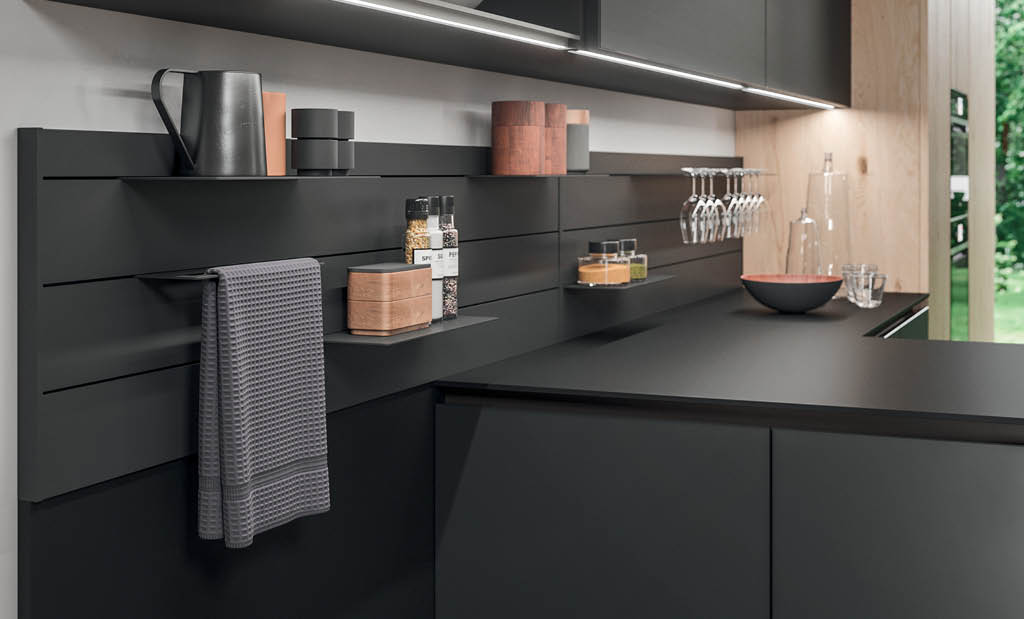
SHAPES AND DIMENSIONS
Based on the material involved, kitchen back panels can be shaped and cut to size. According to the kitchen’s dimensions, you can opt for a back panel of the same length as the cooking hob, or a panel to cover the entire wall.
With regard to height, it can cover the space between wall units and top, or at the designer’s discretion occupy the part strictly necessary to act as a splashback. The remaining space can be finished with epoxy resin or washable paint.
Kitchen back panels can be used not only in the area where food is prepared and cooked, but also on other walls, in the space between base units and wall units. In this case, you can use a single material or experiment with different combinations. In many cases, a back panel can form a boiserie that’s perfect for adding functionality to the kitchen and creating aesthetic continuity with the living area.
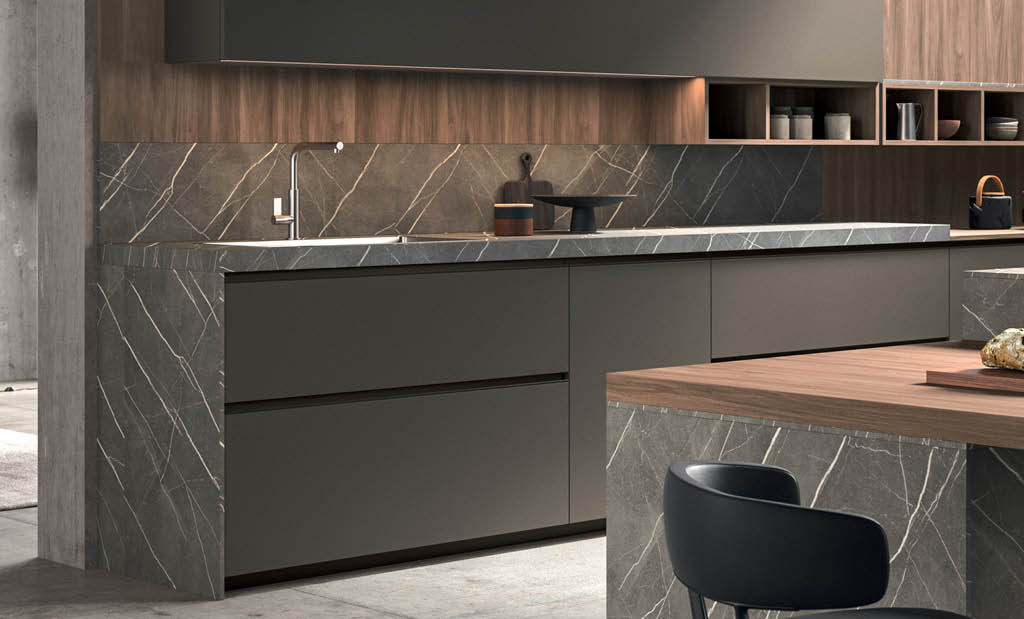
COLOURS
The colour of the back panel will have an impact on the entire kitchen. The rule of thumb is that the back panel should match the top, but other elements should be borne in mind, such as, for example, the floor, ceiling and counter ceiling.
The choice is between bright, pale colours that help to illuminate the kitchen, or contrasting elements that may be darker. Natural or hi-tech finishes are available to fit in with the style of the kitchen. The wide range of materials at your disposal provides plenty of scope for customisation; the important thing is to choose carefully, possibly consulting an expert to ensure the best functional and aesthetic effects and avoid liaisons dangereuses.
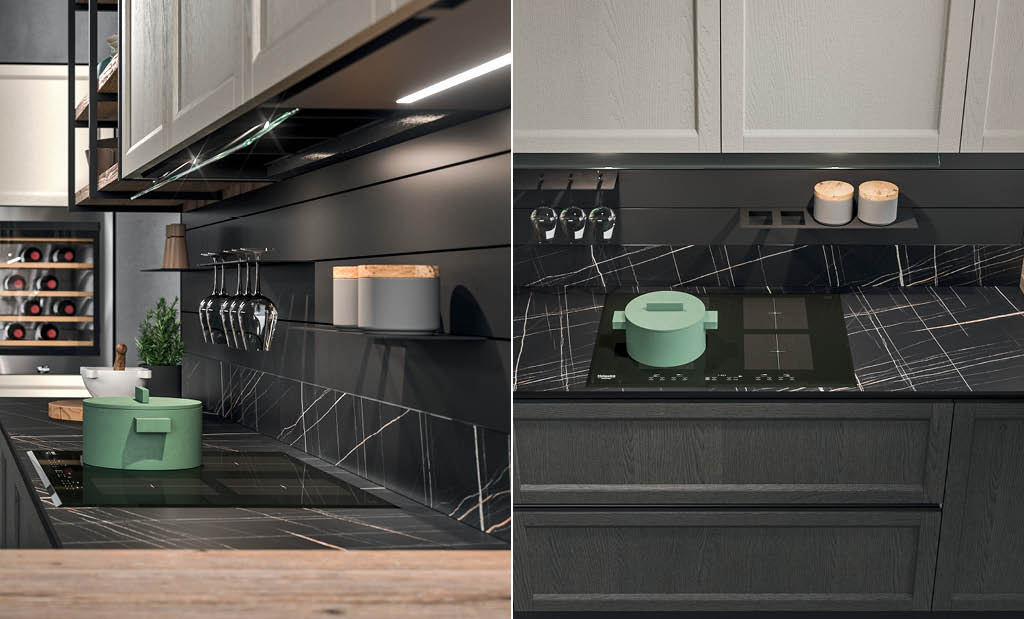
WHICH MATERIAL FOR BACK PANELS?
Choosing the right material for back panels is fundamental for the good looks and functionality of the kitchen. Besides integrating seamlessly with the style of your kitchen, the back panel should be able to withstand high temperatures when placed behind a cooking hob, and be resistant to time, wear, frequent washing and detergents.
For these reasons, it is advisable to keep a minimum distance between the cooking hob and back panel, which can also be protected from heat by a steel sheet. This helps to protect materials that resist heat well from deteriorating over time due to stains or alterations in colours, which do not compromise functions but are unsightly.
Toughened glass
Toughened glass panels have good resistance to high temperatures, soiling and scratches and the composition of glass eliminates the risk of mould and fungi. They bring an elegant, minimal look to the kitchen and come in several glossy, matt and smoky nuances.
Toughened glass cannot be drilled, for example to make way for a wall socket, which, however, can be fitted to the kitchen base units or wall units.
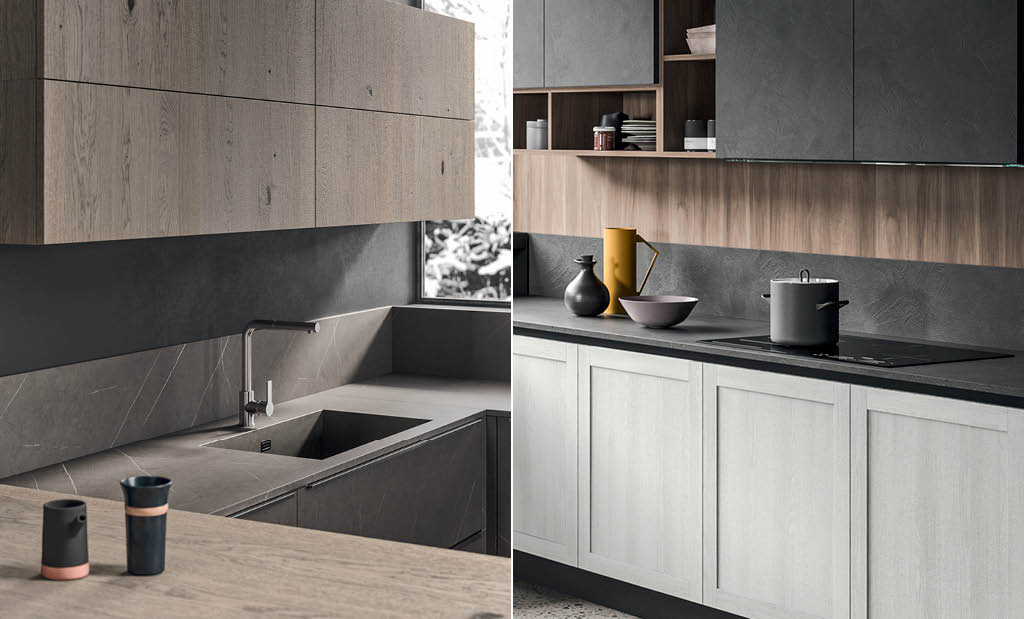
Laminate
Laminate is an extremely versatile material that can be easily shaped and trimmed when being fitted. The lightness of this material means panels can be fixed to the wall by means of mastic or double-sided PVC adhesive tape, without the need for operations involving masonry. Laminate panels are available in a host of colours and finishes, some of which are perfect reproductions of metal, wood and stone.
Steel
Steel is naturally anti-bacterial and highly resistant to knocks, scratches and abrasions, heat and humidity. It is easily cleaned, but requires care and frequent attention to avoid unsightly stains and fingerprints. Like toughened glass, steel is also difficult to shape during fitting. For this reason, choose the panel measurements with care.
Quartz
Quartz panels are distinguished by their resistance to knocks and their particularly hard surface, with the addition of low porosity, which makes these surfaces immune to acids and grease. Available in several variants of shapes, dimensions and thicknesses, quartz slabs provide a practically infinite range of colours, making every composition unique of its kind. The slimmer slabs can be shaped and trimmed during fitting, but this is an operation to be carried out by qualified personnel.
Ceramics
For its resistance to high temperatures, variety of colours and ease of cleaning, ceramics has always been one of the most popular materials for kitchens. Using large tiles will minimize grout lines. Arranging rectangular tiles horizontally will create an optical effect that makes the wall appear bigger, whereas vertical tiling will lead the eye upwards to the ceiling. Available in different shapes (square, rectangular or diamond shaped) and colours, ceramic tiles let you give rein to your creativity.
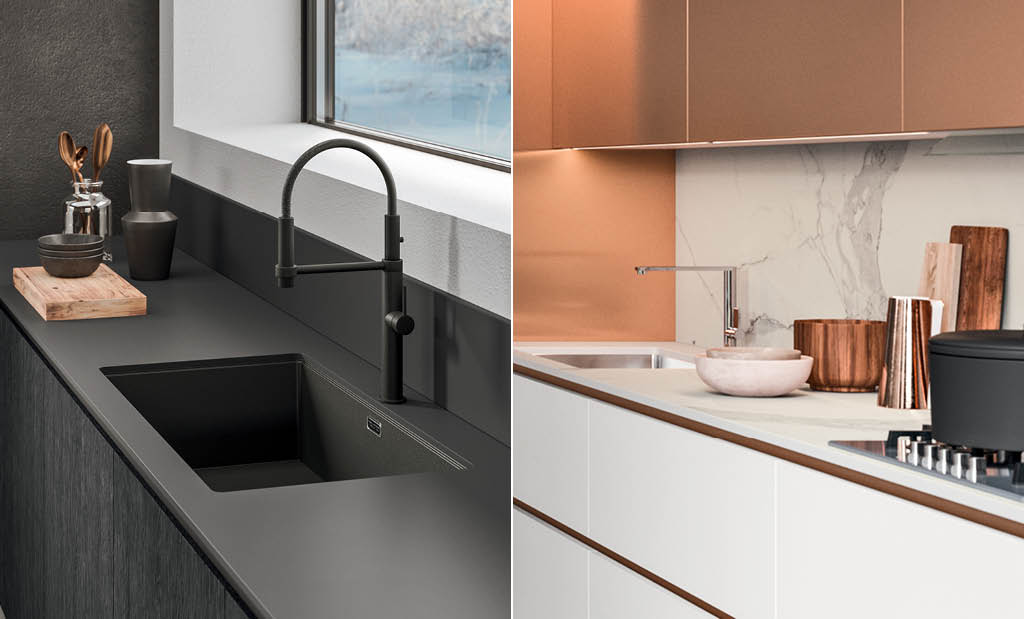
Stoneware
Very much in vogue, stoneware is an evolution of ceramics. Incredibly resistant, it comes in different sized panels that can be fitted side by side with almost invisible grout lines. Also here there is a host of colour schemes and matt, glossy, plain or textured finishes with which to adapt the back panel to any style of kitchen. Stoneware is durable and easy to maintain. However, if you want to attach separate accessories such as shelves or utensil bars it’s better to call in a qualified expert to avoid damaging the panels.
OTHER SOLUTIONS
There are several other options for kitchen back panels, such as, for example, epoxy resins or water repellent coatings, which can be applied directly to the walls like paint. Also with these materials, it’s better to keep a minimum distance between the cooking hob and wall, and preferably protect the latter with a protective sheet of steel.
Materials such as melamine or melamine faced wood particle board should be avoided for back panels in the kitchen work area, as they do not have good resistance to heat and are not suitable for contact with water.
However, they can be used to create interesting combinations of materials and colours to customise your kitchen decor.
